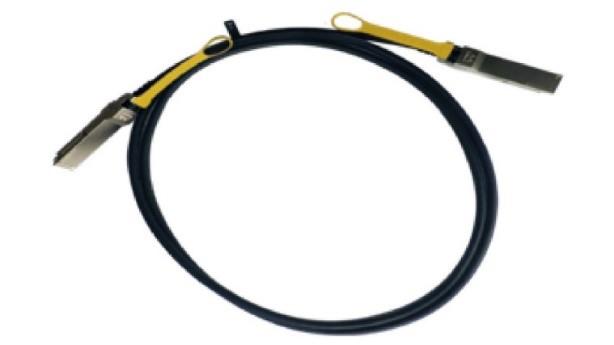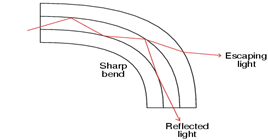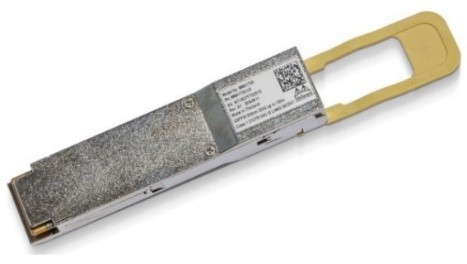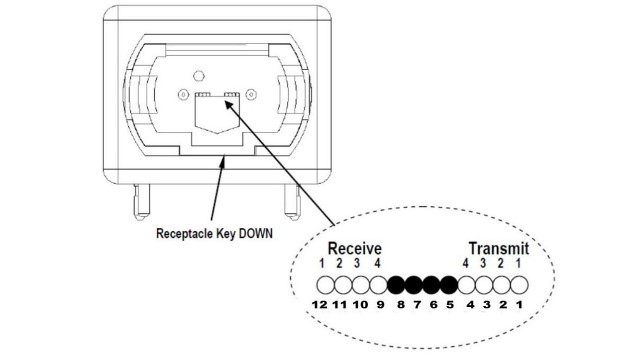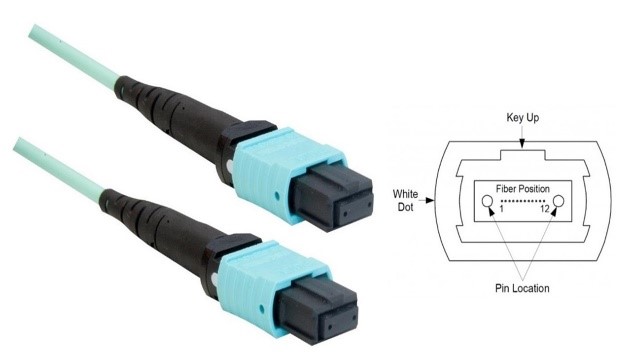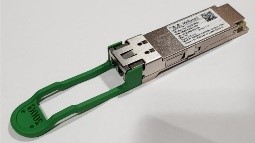Cable Technologies#
InfiniBand cables use two media types: copper and optical fiber.
Copper#
Copper InfiniBand cables have several advantages:
Low cost.
High reliability.
Their disadvantages:
Short reach, especially at high signaling rates.
Larger diameter than optical cables—in high-density cabling situations this can reduce airflow and complicate cable routing.
Due to their short reach, copper cables are mainly used within a rack.
Passive Copper#
Passive copper cables are referred to as direct attach copper (DAC) cables. No port power is required. The maximum length for HDR is 2m. See Figure 5 for an example of a DAC cable.
Figure 5. Direct Attach Copper (DAC) cable
Active Copper#
Active copper cable (ACC) products extend reach by introducing signal boosting electronics in the connector. They are more expensive than DACs, and thinner. For HDR, maximum length is 4m, and 3.5W are required from each InfiniBand port. An example of an ACC is shown in Figure 6.
Figure 6. Active Copper Cable (ACC)
Optical Fiber#
Optical cables have several advantages:
Longer reach.
Smaller diameter than copper.
Disadvantages compared to passive copper:
Higher cost.
Require power from the InfiniBand ports.
Less reliable due to electronics, and to additional physical interfaces in the case of separate transceivers.
InfiniBand optical link types:
Active optical cables.
Optical transceivers with a passive optical cable.
Active Optical Cables#
An active optical cable (AOC) is a passive multilane fiber cable with QSFP optical transceivers integrated at both ends. InfiniBand was an early adopter of AOC cables due to these advantages over physically separate transceivers:
The optical fibers can be perfectly aligned in the factory and their characteristics are well known, so mechanical and electronic costs can be optimized.
Higher reliability due to the elimination of physical interfaces between transceivers and fiber cable.
Disadvantages:
Fixed lengths (although custom lengths are possible).
Not compatible with optical patch panels.
A typical AOC is shown in Figure 7. The maximum AOC length for HDR is 150m.
Figure 7. Active Optical Cable (AOC)
An AOC fiber cable is thinner and more flexible than a copper cable. However, a tight bend can cause signal degradation if light passing through the fiber reflects and refracts abnormally (Figure 8).
Figure 8. Signal degradation due to fiber bend radius
The amount of signal degradation depends on the materials and construction of the cable itself. Some cables are capable of tighter bend radiuses than others, and manufacturer recommendations should always be observed (Table 2).
Cable Type |
Single Cable Diameter |
General Minimum Bend Radius Guidance¹ |
|---|---|---|
QSFP 4 Channel AOC |
3 mm ± 0.1 mm |
15 × diameter (45 mm) dynamic 10 × diameter (30 mm) static Assembly (cable plus connector): 56 mm (2.2 in) |
¹. Check manufacturer recommendations for specific guidance |
||
Optical Transceivers with Passive Fiber#
Two HDR InfiniBand optical transceivers are available: the MMA1T00-HS for short range and the MMS1W50-HM for up to 2 kilometers. Both have a QSFP56 connector on the InfiniBand port side.
MMA1T00-HS Optical Transceiver#
The MMA1T00-HS has an MPO-12 (Multifiber Push-On) receptacle for a passive 8-fiber multi-mode cable. Its reach is 100m, and it requires up to 5w from the InfiniBand port. An MMA1T0-HS module is shown in Figure 9.
Figure 9. MMA1T0-HS optical transceiver
The MPO receptacle on an MMA1T0-HS transceiver is depicted in Figure 10.
Figure 10. MMA1T0-HS MPO transceiver receptacle
Point-to-point (P2P) connections between MMA1T0-HS modules use a Type B MPO jumper cable (also known as a reversed cable or crossover cable). The middle four fibers of the 12 possible fibers are unpopulated. An example of an MPO Type B jumper is shown in Figure 11.
Figure 11. MPO-12 Type B jumper
MMS1W50-HM optical transceiver#
The MMS1W50-HM has a duplex LC connector for a passive dual-fiber single mode cable. Its reach is 2 kilometers, and it requires 5W from the InfiniBand port. Data streams from the four InfiniBand lanes are combined within a single fiber in each direction using coarse wavelength division multiplexing (CWDM). An MMS1W50-HM module is shown in Figure 12.
Figure 12. MMS1W50-HM optical transceiver

